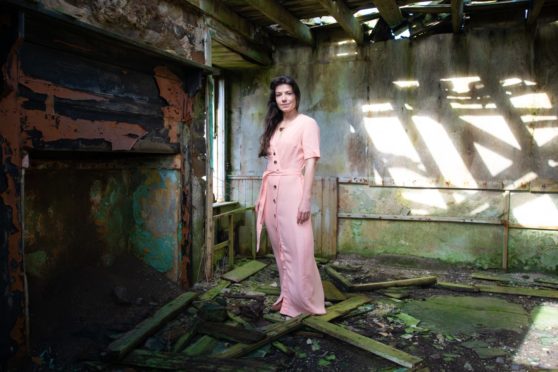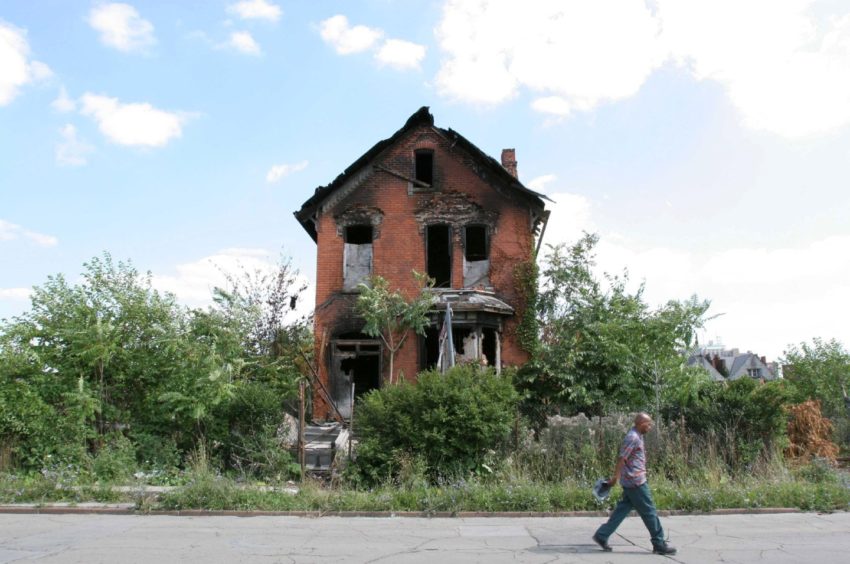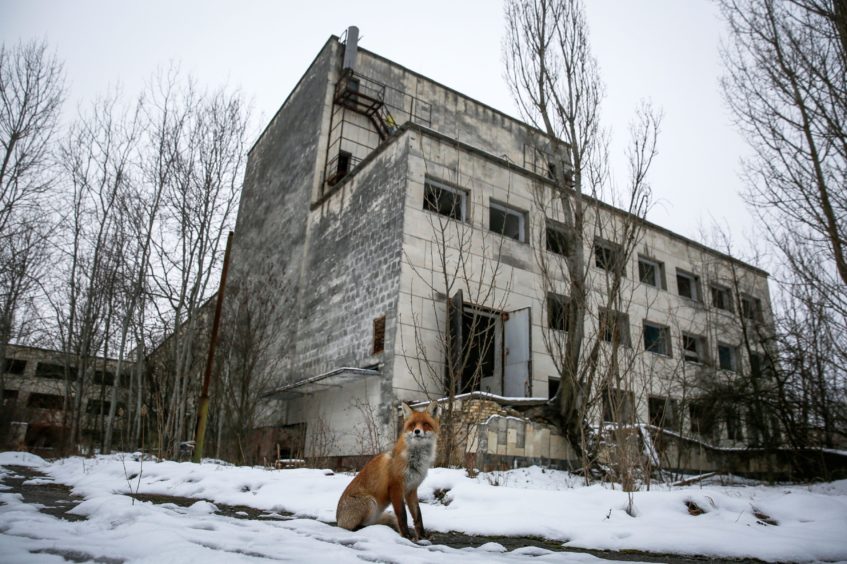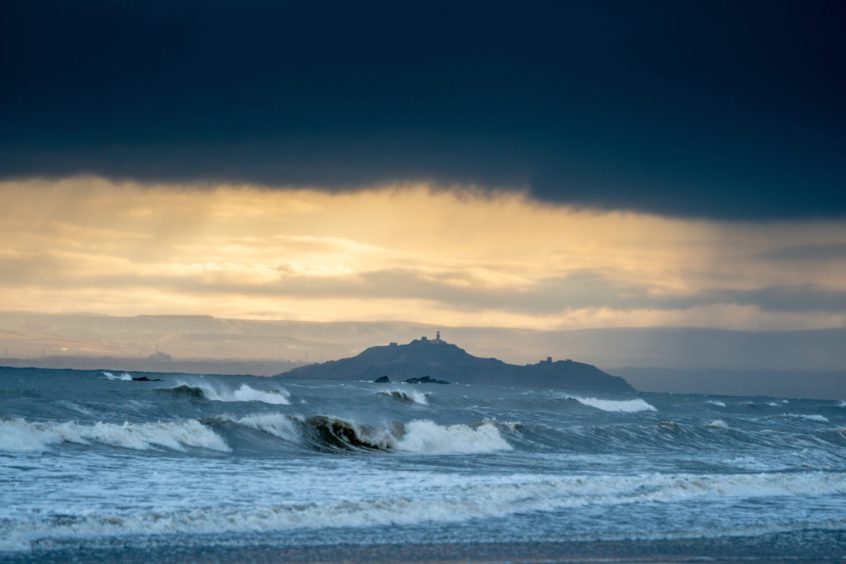
Cal Flyn grips the Geiger counter tighter as the quickening clicks become a howl. It has detected high levels of hazardous radiation and she must urgently move to safer ground.
Towering around her, apartment blocks stand empty, their windows glassless, their corridors strewn with rubble and abandoned belongings. Nearby derelict schools are silent where trees grow in damp, deserted gymnasiums. An armoured car slowly passes. It’s like a scene from a disaster movie. It’s not. The disaster is shockingly, tragically real.
The author is in the former Soviet Union city of Pripyat, now part of Ukraine and built in 1970 to serve the Chernobyl nuclear plant. Once nearly 50,000 people lived here – today it is a ghost town. In the early hours of April 26, 1986, the plant’s No 4 reactor exploded and radiation seeped across Europe in what was the world’s worst nuclear disaster.
Thirty-one people are said to have died on the day, but thousands more would perish later. The city, a town and hundreds of villages were evacuated and a 1,600-square-mile exclusion zone set up.
Thirty-five years on it was the first place that Cal, from Beauly near Inverness, visited in her quest to explore places where humans once but no longer lived, or survived in tiny numbers. The two-year journey that began in 2017 took her to some of the most deserted, desolate, ravaged and polluted parts of the globe. Her purpose? To discover what happens when humanity’s impact on nature is halted.
Now the resulting book – Islands Of Abandonment: Life In The Post-Human Landscape – reveals how, against all odds, new life is springing up and, in some cases, thriving, offering startling opportunities for environmental recovery. She said: “This book should be one of darkness, a litany of the worst places in the world. In fact, it is a story of redemption: how the most polluted spots on Earth – suffocated by oil spills, blasted by bombs, contaminated by nuclear fallout or scraped clean of their natural resources – can be rehabilitated through ecological processes.”
From her home in Orkney, Cal said: “Abandoned land, as a phenomenon worldwide, is growing. There are enormous amounts of it and it is becoming ecologically significant.
“In some parts of the world populations are becoming more urbanised. In many developed countries fertility rates are falling.”
Intensive farming using less land means swathes of “marginal” farmland in Europe, Asia and North America is “being allowed to revert to its wilder form”. This “recovering secondary vegetation” now equates to 2.9 billion hectares – more than double current croplands. And it could reach 5.2 billion hectares by the end of the century.
Cal said: “There is a lot of forestry growth with potential for carbon sinking on a grand scale. Vegetation growth offers us real hope when we look at climate change…but also for biodiversity and allowing rare species to survive – especially in places where people have chosen to leave or places where people have been banned from entering. They become safe havens for species that have been persecuted or have lost habitats elsewhere.
“The scale of Chernobyl is quite staggering; the exclusion zone contains not only two towns, but something like 200 tiny villages.
“Pripyat was like walking into a disaster movie. There are huge apartment buildings, schools that are completely wrecked, swimming pools, sports halls; everything at the time of abandonment was pretty new. Now it is like a time capsule of the 1980s Soviet era. There are security driving around in armoured cars. It has a very dystopian feeling. We were wandering around with a Geiger counter just clicking in the background. It has a siren that is very alarming when you step into a highly contaminated area. You can’t help it, you panic.”
But there is redemption here. Overall radiation levels have fallen dramatically and nature is reclaiming the zone.
“Despite the damage done by the radiation the natural world has rebounded really quite strongly,” said Cal. “It’s not that the animals and plants are not affected by the contamination, so much as the trade-off with the lack of disturbance by people seems in many cases to be in their favour.
“Trees are pushing up through tarmac in the roads. Inside buildings, they are growing next to windows, and ferns grow in damp rooms. There is a lot of maple, poplar and mistletoe.”
Woodland had overtaken much of the traditional farmland with the forest now making up 70% of the zone. The book reveals that, in the immediate aftermath of the accident, in the worst affected areas, radiation levels were “enough to kill every mammal present within a few hours or days. But after a few seasons the regrowth began in earnest. Animals reappeared; lynx, boar, deer, elk, beavers, eagle owl…”
Rare species whose numbers were declining elsewhere in the Soviet Union “found sanctuary” in the abandoned farmland and forests. A decade later every animal population in the zone had at least doubled. By 2010 wolves had increased sevenfold, and by 2014 brown bears were spotted in Chernobyl for the first time in a century. A small number of people had also returned, like Ivan Ivanovitch, one of only two residents in the tiny but “derelict and collapsing” village of Paryshiv.
Cal, who graduated from Oxford University in experimental psychology, also focuses on the psychology of abandoned places: “I was interested in how abandoned places make us as humans feel. Detroit, in the USA, is the negative side of abandonment; how abandoned buildings bring out darker sides of people’s characters.
“Violent crimes tend to spike in areas where there are a lot of abandoned buildings, and house prices drop because people find them unattractive. In Paterson, New Jersey, I found out that some people are equally drawn to abandoned places. They find that stepping off the map and into somewhere completely uncontrolled can be refreshing and attractive.”
Abandoned areas can “attract and repel in equal measure,” said Cal.
Volcanic eruptions in 1995 and 1997 on the Caribbean island of Montserrat buried the capital city of Plymouth in pyroclastic mud and ash and levelled the 40 square-mile island’s southern half. Nineteen people died and more than half the population fled the island. Now the exclusion zone set up in the area is a tourist attraction.
But life thrives even there. Cal explained: “The suburbs have been overgrown by jungle vegetation. I went to an abandoned hotel where the swimming pool was filled with ash and then colonised by trees and plants; grasses, reeds, saplin trees, ferns, and philodendrons. It was like one enormous planter.
“An enormous iguana was living in the abandoned supermarket. And lot of the abandoned houses have become important roosts for different bat species.”
With man-made climate change threatening the future of the planet, the author excitedly cited researchers who have stated that the “enormous and growing extent of recovering ecosystems worldwide provides an unprecedented opportunity for ecological restoration efforts to help to mitigate a sixth mass extinction”.
“We are in the midst of a huge, self-directed experiment in rewilding. Because abandonment is rewilding, in a very pure sense, as humans draw back and nature reclaims what was once hers. It has been taking place – is currently taking place – on a grand scale, while no one is watching.”
But Cal told The Sunday Post she fears limits to this “redemption” story. “If our climate does spin out of control it may be beyond the powers of restoration,” she said. “It is not so much that these places are propping up a free pass to continue wrecking the earth, as saying, if we give the world a chance, it could recover. All is not lost, but that is not to say we don’t still risk a lot.”
Deserted by humans, birds flock to Forth’s fortress islands
The pandemic had just hit as Cal Flyn was finishing Islands Of Abandonment at home in Scotland.
She admitted: “I accidentally wrote a timely book. Social media memes about how nature was somehow reclaiming the streets started to emerge.
“Although that was slightly over-claiming how much can happen in a few short days, it did show how closely the wild elements do already live alongside us and how they might reclaim these places if they really were to be abandoned. The book turned out to be a bit eerily relevant.”
It has already happened on Scots soil. Close to Edinburgh, the abandoned Forth Islands of Inchkeith and Inchmickery are prime examples.
Cal said that, despite their proximity to built-up areas, they have become “significant sea bird breeding and seal haul-out sites”.
Inchkeith, once a garrison, fortress and prison was, until the 1940s, habited by just one seabird, the eider. Today it is the cacophonous home of razorbills, puffins, guillemots, greyscale kittiwakes, winter wrens, rock pigeons and barn swallows. Elder grows in thickets inside its roofless buildings.
There’s a similar story at the Five Sisters of West Lothian and its other oil shale spoil heaps or “bings”, created in the 19th Century when Scotland was the world’s biggest oil producer.
When production stopped in the 1960s, these bare waste hills, barren of any kind of soil, began to sprout life.
Edinburgh University researcher Barbra Harvie later recorded more than 350 plant species on the bings, more than on Ben Nevis, including eight nationally rare species of moss and lichen. Cal said: “There were foxes, hares, skylarks and rare invertebrates finding a safe haven on this wasteland.”
Close to her Orkney home, on the island of Swona – abandoned in 1974 – she found cattle that had been turned loose and had become so feral she was in danger of being trampled.
They were surviving in stable numbers like herds of wild horses or elephants; the males vying for dominance, the losers ostracised.
The island was alive with bird species – fulmars, kittiwakes and bonxies (great skuas), along with a large colony of Arctic terns.
Cal added: “Every time I went to a new place on the island I was threatened by a different species. There’s no space for humans any more.”
Islands Of Abandonment: Life In The Post-Human Landscape by Cal Flyn is published by William Collins

Enjoy the convenience of having The Sunday Post delivered as a digital ePaper straight to your smartphone, tablet or computer.
Subscribe for only £5.49 a month and enjoy all the benefits of the printed paper as a digital replica.
Subscribe © Sipa/Shutterstock
© Sipa/Shutterstock © Roman Pilipey/EPA/Shutterstock
© Roman Pilipey/EPA/Shutterstock © Kenny Smith
© Kenny Smith